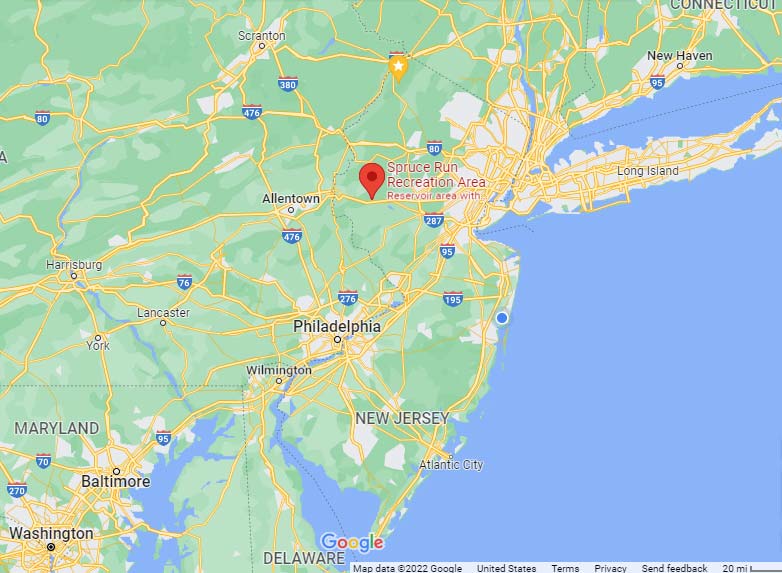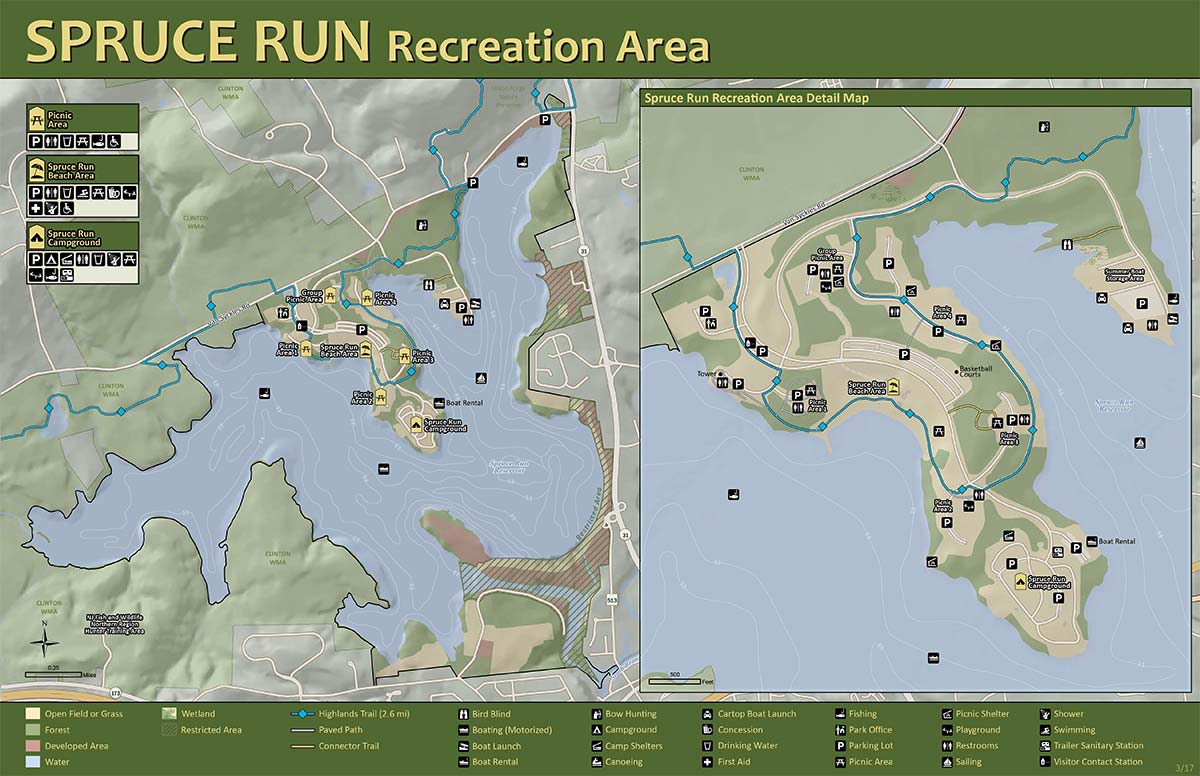
Spruce Run Reservoir’s 1,290 acres of surface area amount to one of New Jersey’s prime hotspots for many species of large freshwater gamefish. Located in the north-central region at Clinton, some drive here from a distance, although from shore points or South Jersey, it won’t be as long a ride as getting to Lake Hopatcong. Most use a boat powered by the limit of 9.9-horsepower, but canoes and kayaks are effective when the wind isn’t heavy, as are boats powered by an electric motor.
Shore fishing, however, can be very effective. In March and April, northern pike as large as 10 pounds get caught where anglers access the mouths of Spruce Run Creek, Black Brook, and Mulhockaway Creek. Pike are naturally drawn by spawning urges to the relative shallows near feeder streams, although they don’t actually reproduce in the reservoir. From April into May, the same spots can be excellent for crappie that may go larger than two pounds, as well as largemouths, occasionally hybrid striped bass, and even rainbow trout that make their way out of Spruce Run and Mulhockaway creeks.
On the subject of trout, the big browns of Spruce Run are a mystery, because they manage to find springs in a warmwater environment that is anoxic deeper than 15 feet or so during summer. Mulhockaway Creek, especially known to be spring fed, is home to wild browns. Before the reservoir filled in 1965, the creek flowed where the channel lies now, and springs continue to release cool, oxygenated water along the way.
Brown trout that make their way out of Mulhockaway and Spruce Run creeks and find such springs remain rare in the reservoir and usually get caught on herring intended for hybrid stripers, but they have come in as large as 10 pounds. During the fall, before running up the creeks to spawn, such trout are vulnerable to shore anglers in the same spots good for pike early in the year. Big carp are also vulnerable to shore anglers, and from access points other than near the creeks.
Spruce Run largemouth and smallmouth bass are plentiful and grow large. It’s a common event to hear of largemouths bigger than 5 pounds and smallmouths over 4 pounds. You don’t read about these catches in published reports, because nearly all of the bass get released and aren’t reported. For the most general idea of where to catch each species, compare the tailfins of largemouth and smallmouth bass. The difference may not seem much, but the deeper fork of a smallmouth tail is a better fit for swifter movement in open water.

While largemouth here may not feed much on herring, smallmouths will even work herring schools along with hybrid stripers. Early in the morning during June and July, by boating with stealth, you may witness boils at the surface caused by smallies, hybrids—or both. To find such action, carefully approach flats of 10 or 12 feet that slope off into deeper water.
The herring fed upon don’t necessarily break surface to escape, though they might. It’s not necessarily true that hybrids or smallies will break the surface, either, but if you hear a sound in the distance like horse hooves clapping pavement, hybrids are after herring. Investigate the area the sound came from, but don’t expect the bass to be just where you heard them. They’re on the move. Rat-L-Traps, Binsky bladebaits, and even Mann’s Little George are effective lures for them. Allowing any one of the three to sink on a tight line into a school may result in a hit.
Largemouth bass like deadfalls in coves and along shorelines, and sometimes all it takes is a stick on a flat 3 feet deep to hook a nice bass on an unweighted plastic worm. If you slow down during the summer through September, but perhaps keep the electric on low speed, you can get a topwater plug into early morning, cloudy day, or evening tight spots. During the warmwater months, deep drop-offs will often have smallies suspended over them, but late fall is when these spots begin to produce both species of bass hugging bottom, though probably not in the reservoir’s deepest 75 feet. Jigs come into their own for these difficultly gained fish.
I respect no other body of water in the state—besides Lake Hopatcong—for such variety and size of fish, as I do Spruce Run Reservoir. When I fish here, I always feel it’s underrated.


